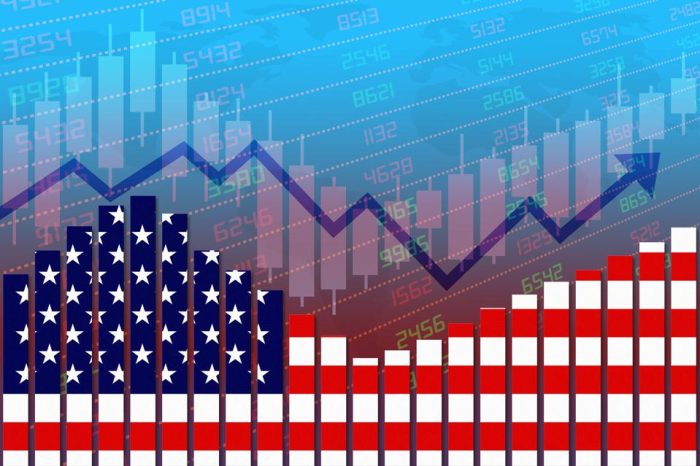- Overview
- South Korea
- Canada
- Italy
- France
- India
- United Kingdom
- Germany
- Japan
- China
- United States
Overview
Economy refers to a country’s production and consumption of goods and services. A growing economy generally produces more goods and services. In a slowing economy, goods and services are delivered at a slower or even reduced rate.
Let’s take a look at 10 of the world’s largest economies in 2022.
10. South Korea
GDP: $1.8 trillion
South Korea enjoys one of the most advanced economies in the entire region as a result of its educated labor force, its export-driven economy, and its technological sector. While South Korea is a relatively small country, its GDP in 2021 was $1.8 trillion, making it one of the most prosperous economies in Asia. South Korea has experienced remarkable economic growth in recent decades due in large part to innovation and technology. In 2022, GDP is forecast to grow at 2.7%, but the pace will slow to around 2% in 2024.
09. Canada
GDP: $1.99 trillion
A large land mass, abundant resources, and proximity to the United States have led to Canada’s GDP of $1.99 trillion being one of the richest in the world. A diverse and robust economy is the hallmark of Canada.
Natural resources such as Gold, zinc, copper, and nickel, extensively utilized all over the world, contribute significantly to its economy. In spite of the fact that it has historically been a resource-dominated economy, today, Canada is predominantly a service economy. A staggering 75% of Canada’s labor force is employed in the service sector. The industry contributes billions to the country’s GDP.
08. Italy
GDP: $2.1 trillion
A GDP of $2.1 trillion places Italy as the eighth largest economy in the world. The Italian government expects GDP to rise 0.6% in 2023 on top of the 3.3% growth in 2022, despite inflation rising to 12.8% in October. As productivity advances continue, Italy has growth potential over the long term. Italian manufacturing is primarily based on high-quality consumer goods manufactured by small and medium-sized firms, many of which are family-owned. Despite this, the country’s gross domestic product is largely based on the services industry, which accounts for 75 percent of its total economic output.
07. France
GDP: $2.94 trillion
The GDP of France in 2021 was $2.94 trillion, making it one of the largest economies in Europe. The French government also projects that its GDP will increase 2.7% by the end of this year and 1% by the end of 2023, despite tough economic conditions. Along with moderated energy prices, France’s economy is projected to continue growing through 2024. The tourism, manufacturing, and pharmaceutical industries are the three main sectors of France’s diversified economy. Many large companies have been privatized or partially privatized by the government; however, a strong presence continues to exist in industries such as security, public transportation, and power.
06. India
GDP: $3.17 trillion
As of 2022, India has ranked third in terms of GDP purchasing power parity at $10.2 trillion, but sixth in terms of nominal GDP at $3.17 trillion. The Indian economy has considerable potential for growth in the future with its 1.4 billion people and young population. There is no doubt that India will become one of the world’s leading economic growth engines. Not only does it have one of the fastest-growing economies, but it also has the world’s third-largest startup ecosystem, as well as tech services, digital, and manufacturing sectors that are poised to become global powerhouses in the coming years.
05. United Kingdom
GDP: $3.19 trillion
It has a GDP of $3.19 trillion, second only to Germany in terms of size in Europe. Based on the IMF’s estimates, the United Kingdom’s GDP is expected to grow by 3.6% by the end of 2022 and 0.3% in 2023. The U.K.’s economy relies heavily on its service sector as well as its finance, insurance, and business services sectors. It is the services sector that generates most of the U.K.’s GDP, and tourism is of particular importance. 79% of the U.K.’s economic output and 82% of employment in April-June 2022 were attributed to the service sector.
04. Germany
GDP: $4.22 trillion
Among the most innovative nations in the world, Germany has a number of leading engineering and technology companies based in its country, making it one of the most creative places in the world. A highly skilled workforce and a wealth of vehicles, machinery, and chemicals make Germany a leading exporter of manufactured goods. The German economy, with a gross domestic product of $4.22 trillion, is one of the largest in the world because of its technological ability and location near the center of the continent. According to the Economic Forecast for 2022, there will be a growth of 1.8%, a contraction of 0.3% in 2023, and a recovery of 1.5% in 2024.
03. Japan
GDP: $4.94 trillion
A GDP of $4.94 trillion places Japan third in the world. According to the government’s estimates, Japan has the highest GDP per capita in all of Asia. Though Japan has suffered from deflation for many years, its economy still has growth potential if it continues to innovate. The Japanese economy is known as the East Asian model since they are highly developed social market economy. In terms of nominal GDP, it ranks third in the world and fourth in terms of purchasing power parity (PPP). It is predicted that real GDP will grow by 1.8% in 2023 and 0.9% in 2024.
02. China
GDP: $17.73 trillion
Based on nominal GDP, China has the second largest economy in the world, with a GDP of $17.73 trillion in 2021. As far as purchasing power parity is concerned, China ranks first with a purchasing power parity of $27.31 trillion. Due to China’s lower GDP per capita than the West, it has substantial growth potential despite experiencing economic headwinds like many other nations. Over the past forty years, China has gradually opened its economy and improved its standard of living. Since the Chinese government eliminated collectivized agriculture, market prices have evolved, businesses have become more autonomous, trade market prices have become more flexible, and investments have increased.
01. United States

GDP: $23 trillion
The United States ranks #1 on our list due to its $23 trillion GDP, robust economic growth, and role as the world’s leading reserve currency. With its demographics, immigration, and strong institutions, the United States has substantial long-term economic growth potential, despite Federal Reserve interest rate hikes projected next year. Based on estimates, the U.S. BLS predicts an average growth rate of 2.3% over the next decade. It is important to note, however, that despite the fact that the United States is an economy that has a relatively sophisticated mixed-market structure, nearly 80% of its output is produced by its dynamic, rapidly growing, and technologically advanced service sector.








